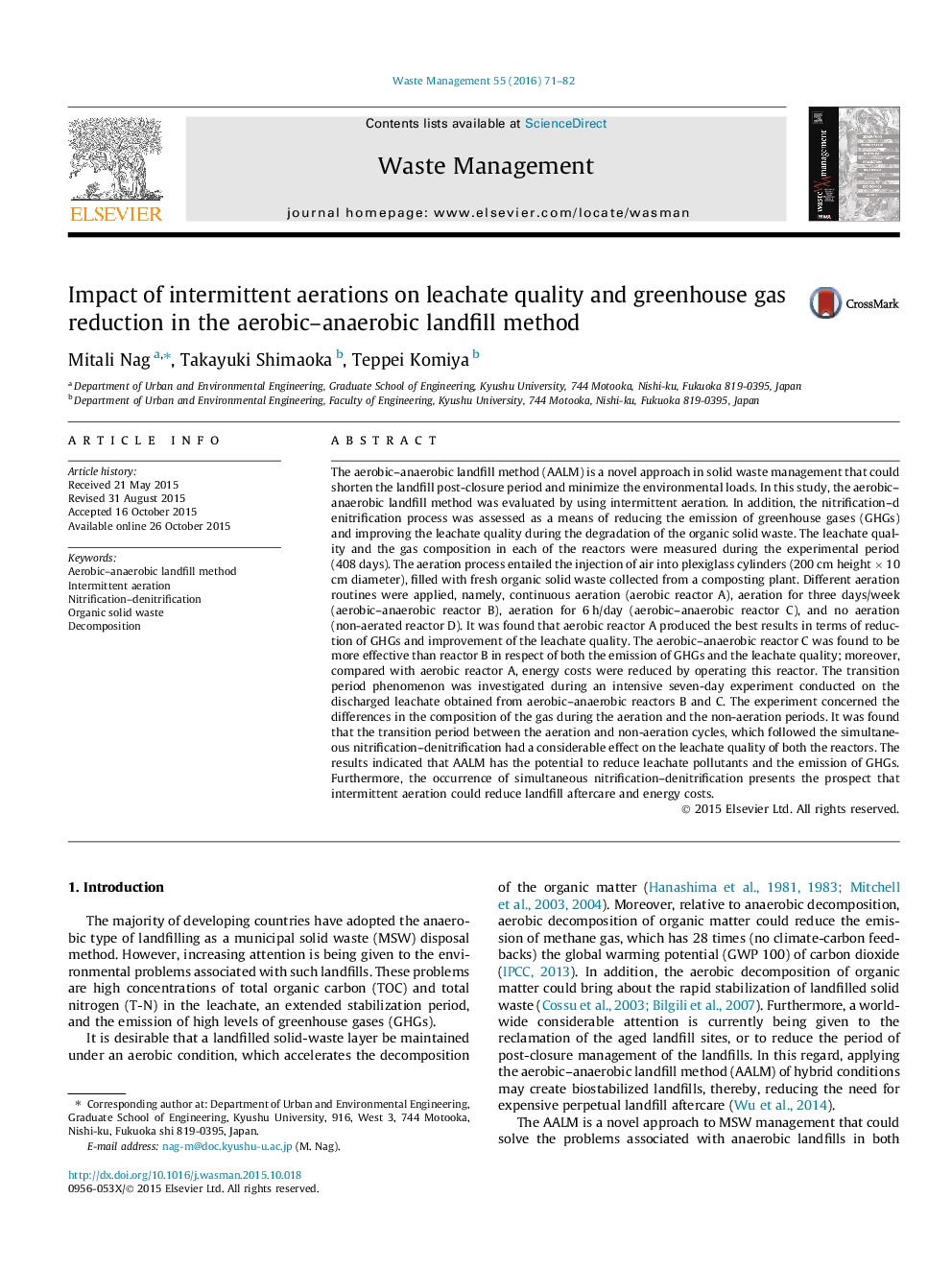| کد مقاله | کد نشریه | سال انتشار | مقاله انگلیسی | نسخه تمام متن |
|---|---|---|---|---|
| 4471184 | 1622631 | 2016 | 12 صفحه PDF | دانلود رایگان |
• Intermittent aeration has notable impact on leachate quality and GHGs reduction.
• Carbon and nitrogen mass balances estimated.
• Simultaneous nitrification–denitrification observed in intermittent aeration.
The aerobic–anaerobic landfill method (AALM) is a novel approach in solid waste management that could shorten the landfill post-closure period and minimize the environmental loads. In this study, the aerobic–anaerobic landfill method was evaluated by using intermittent aeration. In addition, the nitrification–denitrification process was assessed as a means of reducing the emission of greenhouse gases (GHGs) and improving the leachate quality during the degradation of the organic solid waste. The leachate quality and the gas composition in each of the reactors were measured during the experimental period (408 days). The aeration process entailed the injection of air into plexiglass cylinders (200 cm height × 10 cm diameter), filled with fresh organic solid waste collected from a composting plant. Different aeration routines were applied, namely, continuous aeration (aerobic reactor A), aeration for three days/week (aerobic–anaerobic reactor B), aeration for 6 h/day (aerobic–anaerobic reactor C), and no aeration (non-aerated reactor D). It was found that aerobic reactor A produced the best results in terms of reduction of GHGs and improvement of the leachate quality. The aerobic–anaerobic reactor C was found to be more effective than reactor B in respect of both the emission of GHGs and the leachate quality; moreover, compared with aerobic reactor A, energy costs were reduced by operating this reactor. The transition period phenomenon was investigated during an intensive seven-day experiment conducted on the discharged leachate obtained from aerobic–anaerobic reactors B and C. The experiment concerned the differences in the composition of the gas during the aeration and the non-aeration periods. It was found that the transition period between the aeration and non-aeration cycles, which followed the simultaneous nitrification–denitrification had a considerable effect on the leachate quality of both the reactors. The results indicated that AALM has the potential to reduce leachate pollutants and the emission of GHGs. Furthermore, the occurrence of simultaneous nitrification–denitrification presents the prospect that intermittent aeration could reduce landfill aftercare and energy costs.
Journal: Waste Management - Volume 55, September 2016, Pages 71–82
